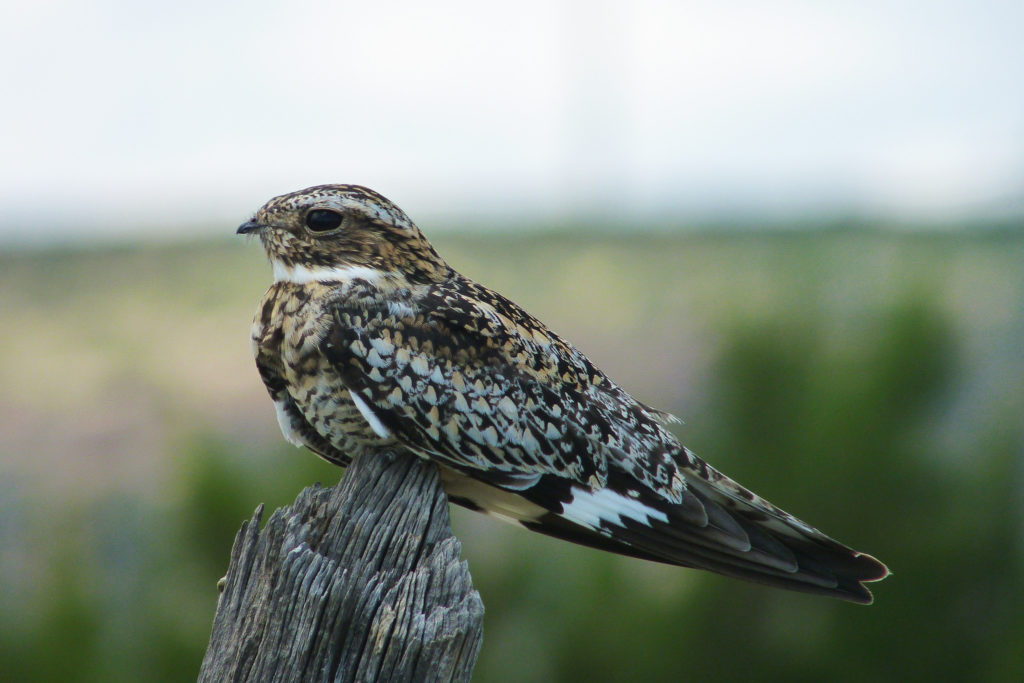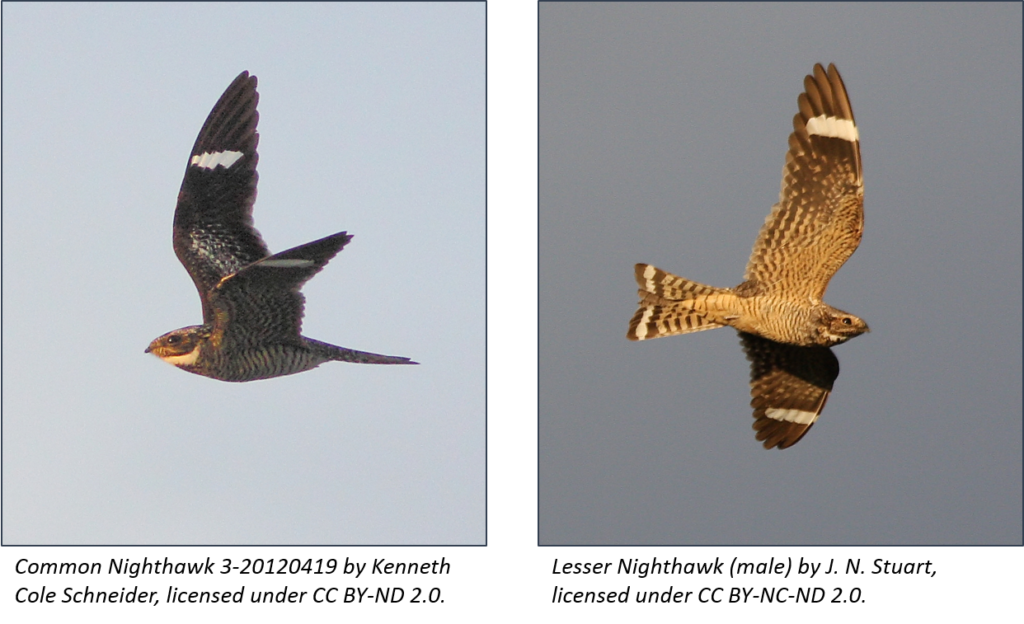What’s in a name?
Although most wildlife names are pretty straightforward (white-tailed deer have white tails, northern bobwhites say their name), others can be misleading. This post is about nighthawks, which are fascinating birds that are not at all related to hawks!

Common Nighthawk – 6/10/15 – Guadalupe County – NM by sfitzgerald86, licensed under CC BY-NC 2.0.
Unlike hawks, which are classified together with other large, diurnal birds of prey, nighthawks are part of a group of birds that eat insects and are most active at night. Other birds in the same family as nighthawks have equally fascinating names, including nightjar, chuck-will’s-widow, whip-poor-will, and pauraque.
Two species of nighthawks live in Texas: common and lesser nighthawks. While common nighthawks are found throughout the state, lesser nighthawks are found all along the Mexican border and throughout the Trans-Pecos. Both species prefer open habitats, and common nighthawks have adapted to live in suburbs and cities as well as open rangeland. Lesser nighthawks are adapted to arid habitats.
Nighthawks nest on the ground, usually laying two eggs in the open and relying on camouflage to keep hidden. Adult nighthawks are also incredibly well-camouflaged, so nests are typically very hard to find. In both species, the female does most of the incubating, but both parents will feed the chicks.
Where both common and lesser nighthawks are found, the best way to distinguish them is by their calls. Common nighthawks make a short, sharp peent sound, while the call of lesser nighthawks is a rolling, drawn-out sound that resembles a toad call.
Common nighthawk:
Lesser nighthawk:
In flight, you can distinguish between the two species by looking at the wings. Lesser nighthawks have slightly more rounded wings, and the white bar on the wings is closer to the wingtip than on common nighthawks.

On rangelands, in deserts, and even in suburbs, nighthawks benefit people by providing valuable insect control. Both species will take advantage of swarms of termites and flying ants, as well as moths and grasshoppers.
Keep an ear open for your local nighthawks tonight!
Bird calls courtesy of the Arizona Field Ornithologists Sound Library, recorded by Pierre Deviche. Downloaded for noncommercial educational use; see website for copyright.